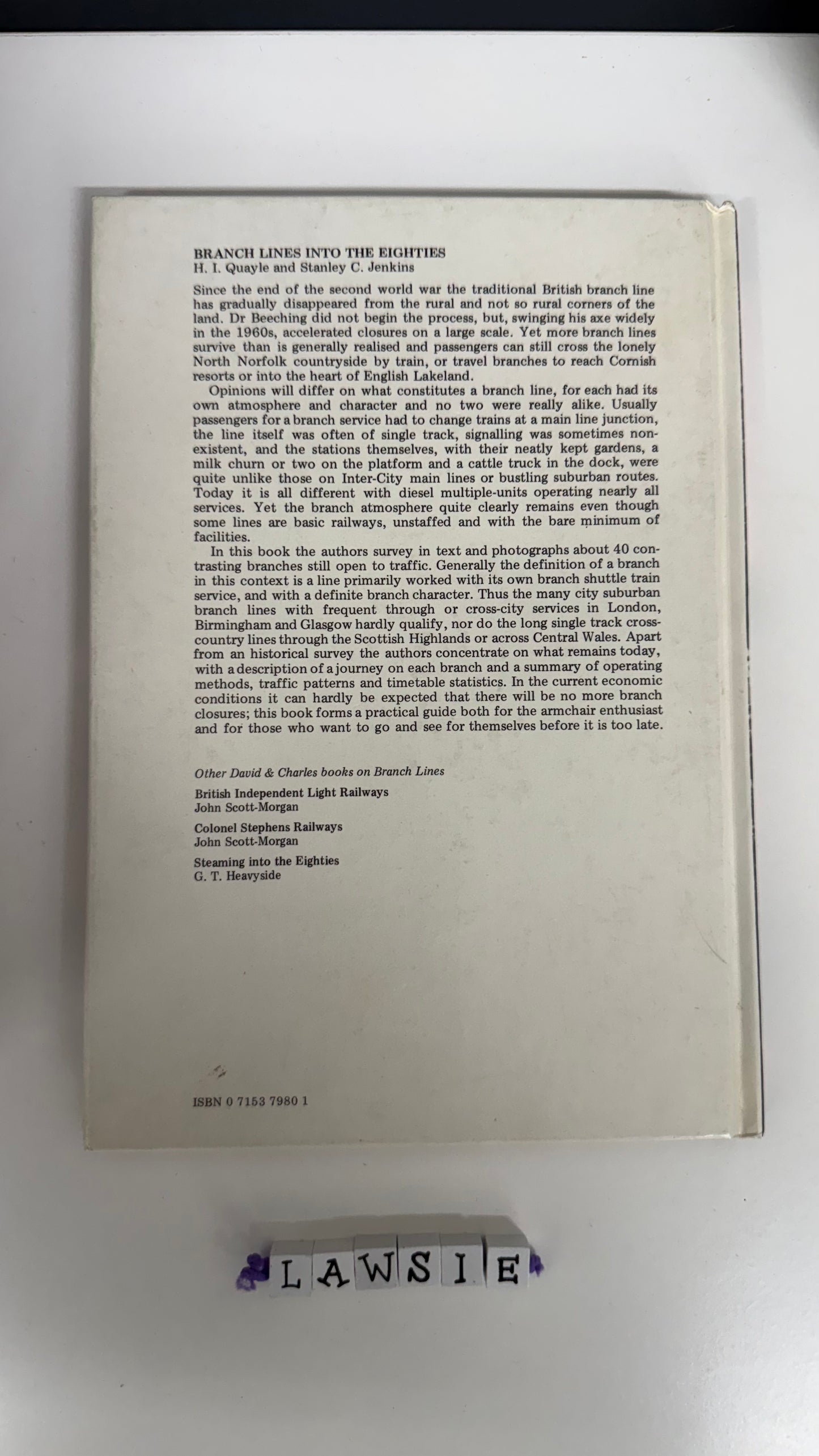Branch lines into the eighties by H.I. Quayle and Stanley C.Jenkins
Branch lines into the eighties by H.I. Quayle and Stanley C.Jenkins
BRANCH LINES INTO THE EIGHTIES
H. I. Quayle and Stanley C. Jenkins
Since the end of the second world war the traditional British branch line has gradually disappeared from the rural and not so rural corners of the land. Dr Beeching did not begin the process, but, swinging his axe widely in the 1960s, accelerated closures on a large scale. Yet more branch lines survive than is generally realised and passengers can still cross the lonely North Norfolk countryside by train, or travel branches to reach Cornish resorts or into the heart of English Lakeland.
Opinions will differ on what constitutes a branch line, for each had its own atmosphere and character and no two were really alike. Usually passengers for a branch service had to change trains at a main line junction, the line itself was often of single track, signalling was sometimes non-existent, and the stations themselves, with their neatly kept gardens, a milk churn or two on the platform and a cattle truck in the dock, were quite unlike those on Inter-City main lines or bustling suburban routes.
Today it is all different with diesel multiple-units operating nearly all services. Yet the branch atmosphere quite clearly remains even though some lines are basic railways, unstaffed and with the bare minimum of facilities.
In this book the authors survey in text and photographs about 40 contrasting branches still open to traffic. Generally the definition of a branch in this context is a line primarily worked with its own branch shuttle train service, and with a definite branch character. Thus the many city suburban branch lines with frequent through or cross-city services in London,
Birmingham and Glasgow hardly qualify, nor do the long single track cross-country lines through the Scottish Highlands or across Central Wales. Apart from an historical survey the authors concentrate on what remains today, with a description of a journey on each branch and a summary of operating methods, traffic patterns and timetable statistics. In the current economic conditions it can hardly be expected that there will be no more branch closures; this book forms a practical guide both for the armchair enthusiast and for those who want to go and see for themselves before it is too late.
Other David & Charles books on Branch Lines
British Independent Light Railways
John Scott-Morgan
Colonel Stephens Railways
John Scott-Morgan
Steaming into the Eighties
G. T. Heavyside
Couldn't load pickup availability
Low stock: 1 left
View full details



